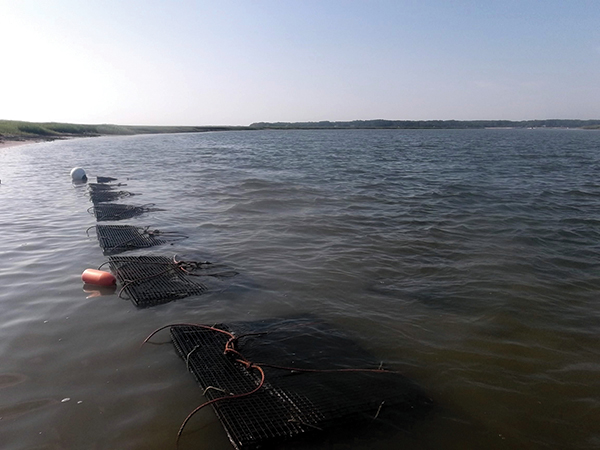

One replicated, controlled study in the Gulf of Mexico found that diversity of reef-associated invertebrates was higher in all restored reefs than on unrestored sediment, but that diversity varied between the restoration materials used. Overall species richness/diversity (3 studies): One replicated, site comparison study in the Gulf of Mexico found that diversity of reef-associated invertebrates was similar in reefs restored by laying rocks regardless of age, in young reefs restored by laying oyster shells, and in natural reefs, but lower in old shell-restored reefs.Overall community composition (2 studies): One of two replicated, controlled studies in the Gulf of Mexico and the Mission-Aransas estuary found that after restoring eastern oyster reefs, the community composition of combined mobile decapod invertebrates and fish was similar on all types of restoration material used, but the other found that composition varied with the material used.Two were in the Gulf of Mexico (USA), one was a global review, four were in the North Pacific Ocean (USA), and one was in the Mission-Aransas estuary (USA). Eight studies examined the effects of restoring oyster reefs (not by transplanting or translocating oysters) on oysters and oyster reef-associated subtidal benthic invertebrates.Marine Ecology Progress Series, 374, 33–41. (2009) Local changes in community diversity after coral transplantation. (2014) Early faunal successional patterns in artificial reefs used for restoration of impacted biogenic habitats.

Marine Environmental Research, 97, 67–78. (2014) Effects of common seagrass restoration methods on ecosystem structure in subtropical seagrass meadows. For instance, restoring seagrass beds by fertilizing the seabed and adding natural sediment to promote natural seagrass recovery can help the invertebrate community associated with seagrass beds to recover naturally over time (Bourque & Fourqurean 2014).īourque A.S. Restoring these habitats where they have been either degraded or lost can be achieved by transplanting or translocating new individuals of the biogenic species (evidence summarised under “Habitat restoration and creation – Transplant captive-bred or hatchery-reared habitat-forming (biogenic) species” and “Translocate habitat-forming (biogenic) species” Fariñas-Franco & Roberts 20) or using other restoration methods that promote the natural recovery of the habitat. Such habitats include coral reefs, oyster reefs, mussel beds, and kelp forests (Jones et al. The overall implication for choosing sites for oyster reef restoration projects, particularly in recruitment-limited areas, is that they may need to be located much closer to spawning adults than previously thought to maximize the likelihood of adequate natural recruitment and reef development.Marine biogenic habitats are habitats created by the occurrence of a suite of specific marine species that form a new complex environment for other species to live in and can locally promote subtidal benthic invertebrate biodiversity. Additional research is needed in other areas to test the generality of the findings and to assess potential causal factors for the observed patterns. These data do not negate the potential importance of widespread dispersal and recruitment, but they do indicate a surprising level of recruitment very near their likely source. Spat densities on the reefs and within 400 m of the reefs were nearly 10-fold higher than densities more distant. To explore this relationship, spat collectors were deployed on and near (up to 1 km distance) three natural oyster reefs in New Hampshire in 20.
#Oyster spat recruitment methods full#
It is well established that larvae can be widely dispersed, but the relationship between dispersal potential and actual recruitment patterns across the full range of spatial scales involved remains unknown. The spatial relationship between adult eastern oyster Crassostrea virginica populations and recruitment to the benthos of their offspring is not well understood.


 0 kommentar(er)
0 kommentar(er)
